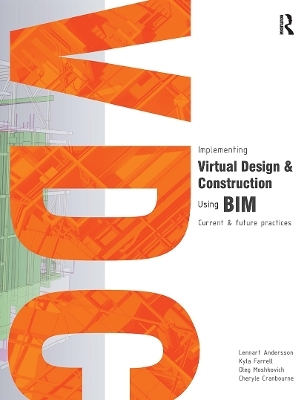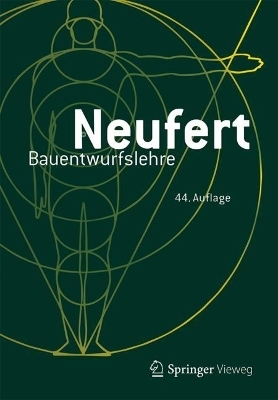
Implementing Virtual Design and Construction using BIM
Routledge (Verlag)
978-1-032-92372-7 (ISBN)
Implementing Virtual Design and Construction using BIM outlines the team structure, software and production ecosystem needed for an effective Virtual Design and Construction (VDC) process through current real world case studies of projects both in development and under construction. It provides the reader with a better understanding of the successful implementation of VDC and Building Information Modeling (BIM), and the benefits to the project team throughout the design and construction process. For readers already familiar with VDC, the book will provide invaluable examples of best practices and real world solutions.
Richly illustrated in color with actual VDC documentation, visualizations, and statistics, the reader is shown the real processes undertaken and outputs generated when working on high profile building information models. Online animations, interviews with practitioners, and downloadable templates, forms and files make this an interactive and highly engaging way to learn a crucial set of skills.
While keeping up with current industry practice is a minimum requirement, this book goes further by helping you prepare for the next level of virtual design and construction. This is essential reading for project managers, construction managers, architects, design managers, and anybody with a role in BIM or virtual construction.
Lennart Andersson is the director of Virtual Design & Construction (VDC) at LiRo. He studied engineering in Sweden and received a master's degree in architecture in the US. He is a licensed architect with sixteen years of experience applying virtual design and construction methodologies on a wide variety of projects. Lennart is spearheading the firm-wide adoption of VDC at LiRo. Examples of projects he has been involved in are East Side Access, City Point Brooklyn, New York Public Library, and a number of other large-scale projects in New York City. He is a visiting professor at Pratt Institute in New York, where he teaches an advanced, collaborative VDC studio between architects and construction managers in partnership with the New York City Department of Design and Construction. He has hosted several seminars covering advanced VDC use in design, construction and operations. Kyla Farrell worked as a VDC project manager at the LiRo Group from 2012 to 2014. Prior to LiRo, she was employed by Gehry Technologies, Zaha Hadid Architects and SHoP Construction, where she developed and managed parametric 3-D models for the design, fabrication, and coordination of complex projects. Kyla received her first degree from Stanford University and holds a master's degree in architecture from the Southern California Institute of Architecture. She currently works as a software engineer in the San Francisco Bay Area. Oleg Moshkovich is a VDC product architect at the LiRo Group. He is responsible for the design and implementation of virtual construction processes on projects of increased complexity. His main engagement at LiRo is in the design and implementation of VDC on the East Side Access project. His multidisciplinary and multicultural experience allows him to envision and to communicate technology-driven, integrated project solutions. His experience includes engineering, architecture, web development, and project controls. He holds a master's degree in engineering in product architecture from Stevens Institute of Technology, USA. Cheryle Cranbourne is a VDC specialist at the LiRo Group, involved in modeling complex and large-scale projects. She is also responsible for creating animations and informational graphics for project development and marketing purposes, such as the experience simulations of the East Side Access and City Point projects. She has a diverse and multicultural design background, having worked in interior architecture, advertising and graphic design roles in the US and Asia. Cheryle received a B.Sc. in communications from Boston University, and a master’s degree in interior architecture from the Rhode Island School of Design, USA.
Preface 1. Introduction 2. The Practice of VDC 3. Case Studies 4. VDC Tools 5. Reference Documents 6. The Future of VDC
| Erscheinungsdatum | 16.10.2024 |
|---|---|
| Verlagsort | London |
| Sprache | englisch |
| Maße | 189 x 246 mm |
| Gewicht | 550 g |
| Themenwelt | Technik ► Architektur |
| Technik ► Bauwesen | |
| ISBN-10 | 1-032-92372-5 / 1032923725 |
| ISBN-13 | 978-1-032-92372-7 / 9781032923727 |
| Zustand | Neuware |
| Haben Sie eine Frage zum Produkt? |
aus dem Bereich


